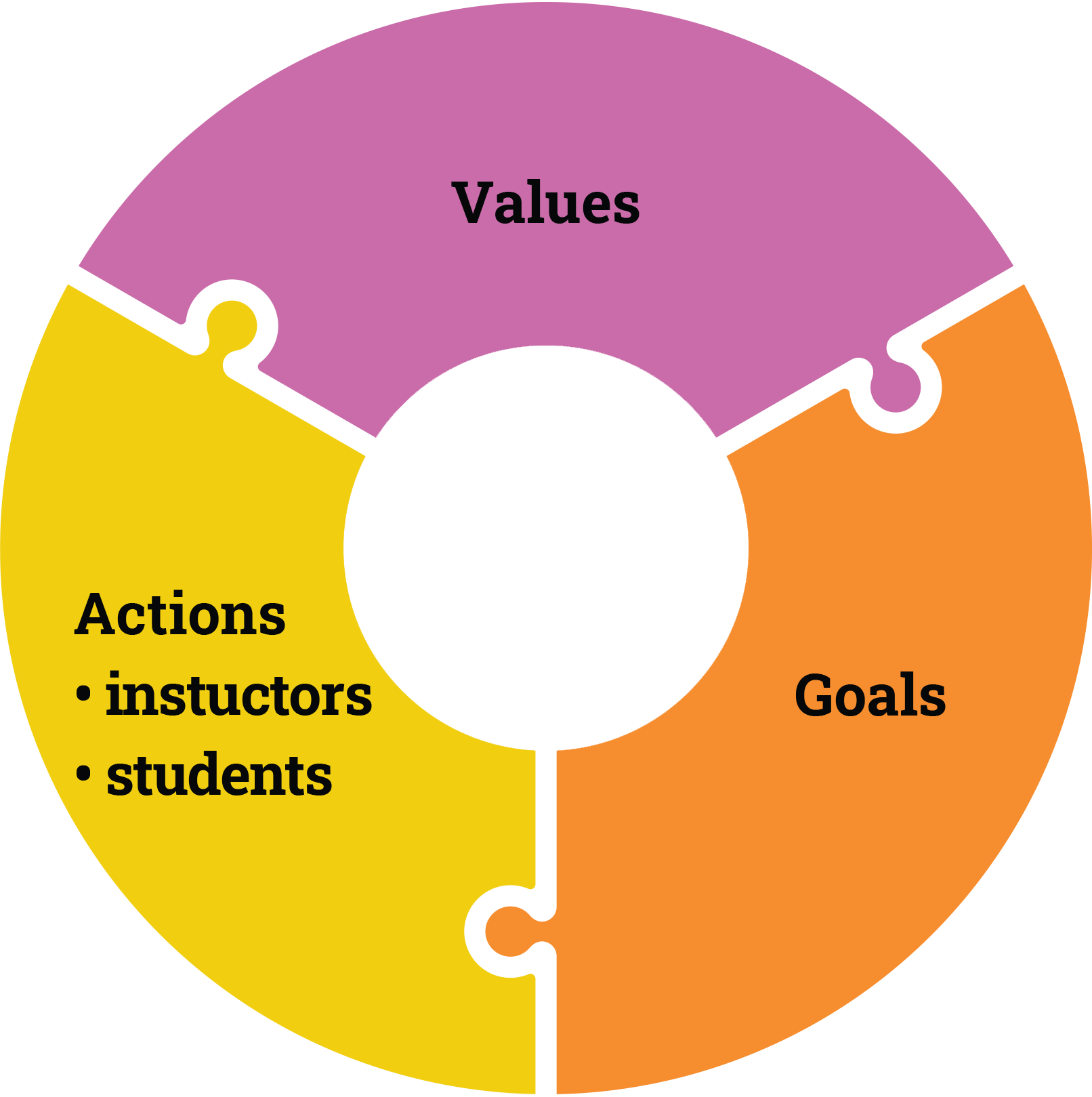Access Checks
Context and purpose: Access checks
An access check is a declaration of values, goals, and actions related to accessibility as well as, disability rights and justice. Doing an access check well requires going beyond an initial statement and committing to proactive, flexible planning for accessibility. You should also return to your access check with your students throughout a course to ensure that you are meeting the needs of each unique cohort. In many ways, access checks are similar in concept and development to an EDI statement. Developing an access check and sharing it with students during a course welcomes the varied accessibility needs that students will bring to the classroom from their unique social locations1 and lived experiences.
[1] Social location describes the intersectional position an individual holds within their society and is based on varied, entwined social characteristics and community affiliations individuals hold. While some aspects of social location are fixed, others may shift over time. Social location impacts how we move through the world, how we view others, and how we are viewed by others.
Accessibility upgrade
While access checks model proactive commitment to accessibility, individual students may still require formal accommodations to address barriers and support learning. Understanding how to provide required accommodations and sharing campus-wide student supports nurtures a wraparound approach to accessibility and equity.
Strategies: Drafting and integrating access checks
- Identify your values (e.g., transparency, flexibility, accountability) and goals (e.g., building relationships; prioritizing accessibility) for the access check
- Draft your access check
- Early in a course, share aspects of your course policies and procedures (e.g., in your syllabus) that align with your access check (e.g., flexible deadlines, options for class participation, multimodal learning materials)
- Share your access check with students at relevant moments / intervals (e.g., in the syllabus and assignments; aloud during class throughout term)
- Reflect on and update your access check

Accessibility upgrade
Seek feedback from students (anonymously) and colleagues (in conversation) on your access check.
Examples: Access checks
- Mandy Penney, Centre for Teaching and Learning, University of Alberta
For transparency: I understand access as a shared responsibility and strive to offer inclusive, accessible spaces that reduce the need for disclosure of individual access needs or accommodations. I distinguish between formal accommodations (potentially a difficult process to navigate) and access needs, which we all bring to our spaces from a variety of social locations. My goal is to welcome everyone into our shared space as whole people with unique access needs based on disability and/or diverse life experiences. In doing this work together, I hope that we will strive to welcome disability, and the changes it brings, into our space.
If I have not addressed your access needs, or you notice a barrier that may impact others, please bring it to my attention via whatever channel you prefer. Today, I have provided copies of the slides as a PDF with alt text at the outset of the session; automated closed captioning is enabled through Zoom; please feel free to eat, drink, stim, leave the camera on or off, and engage via chat or mic – please take care of yourselves in ways that make sense for you.
Adapted from TA Training Program at the University of Toronto - J. Logan Smilges, Department of English Language and Literatures, University of British Columbia [excerpt, shared with permission]
I want to take a moment to invite everyone here to occupy this space in a way that is as comfortable and accessible to you as possible. Comfort for you might mean drawing, knitting, rocking, ticking, or stimming while we talk. Access might include standing up, lying down, walking laps, or taking breaks. You might keep your camera on or off. You might need to leave the Zoom for awhile and come back, or you might just leave. We all have different bodies and different minds, and I want to encourage you to honor your own bodymind and all its exquisite variations.
Learning journey: Reflective prompts
Reflection questions to support your work towards integrating access checks into your teaching practice:
- How does my access check connect my values to our classroom goals?
- Does my access check safely and relationally invite students to share their access needs with me?
- How can I invite anonymous feedback from students?
- What is my plan for periodically reflecting on and updating my access check?
- What questions do I have about accessibility, disability, and / or Universal Design for Learning?
As you build access checks into your teaching and learning, reach out to the following units for support and consultation, depending on your specific needs:
- Centre for Teaching and Learning – understanding the pedagogical purpose of an access check; developing your access check; locating this practice within the frameworks of Universal Design for Learning (UDL), Disability Justice, and Students-as-Partners.
- Accessibility & Accommodations Services – understanding the duty to accommodate at the University of Alberta; discussing specific student accommodations or broader processes; identifying possibilities for adaptive technologies
Learn more: Additional resources
- Reinholz, D.L., & Ridgway, S.W. (2021) Access needs: Centering students and disrupting ableist norms in STEM. Ed. Bauerle, C. CBE: Life Sciences Education 20(3).
- Shew, A. (2021). Disability disclosure in the classroom. Inside Higher Education.
The Accessibility Resource Series is a collaboration between the following units: Centre for Teaching and Learning | Accessibility & Accommodations Services | Online Learning and Continuing Education | Information Services and Technology

Licensed under a Creative Commons Attribution-Noncommercial-Sharealike 4.0 International License.